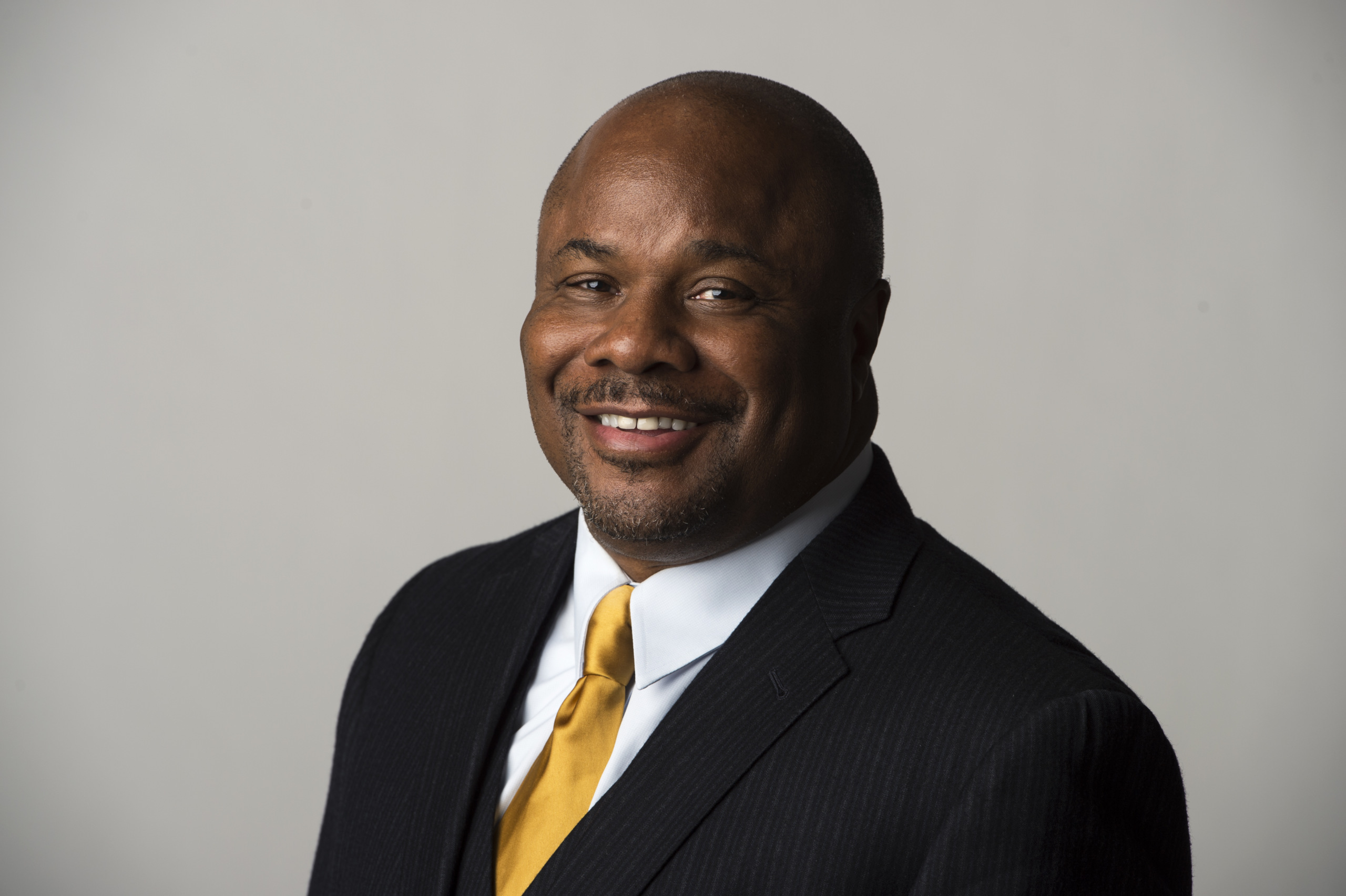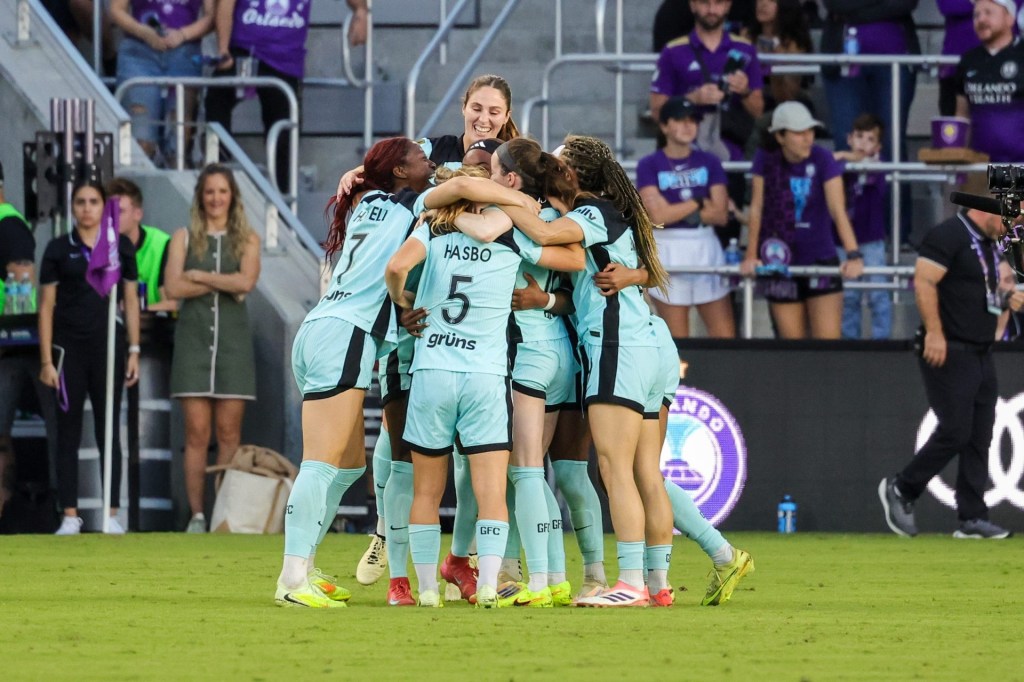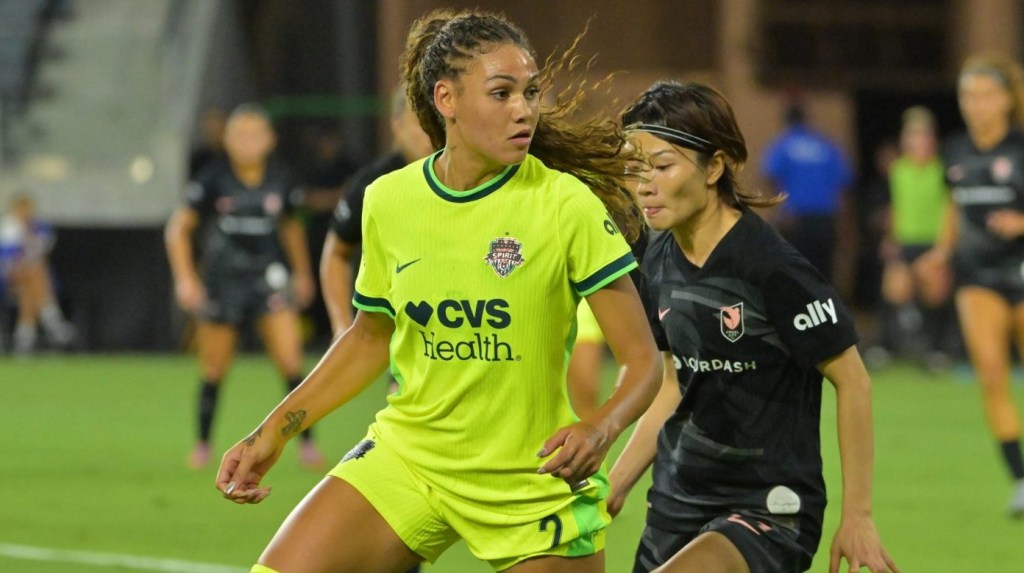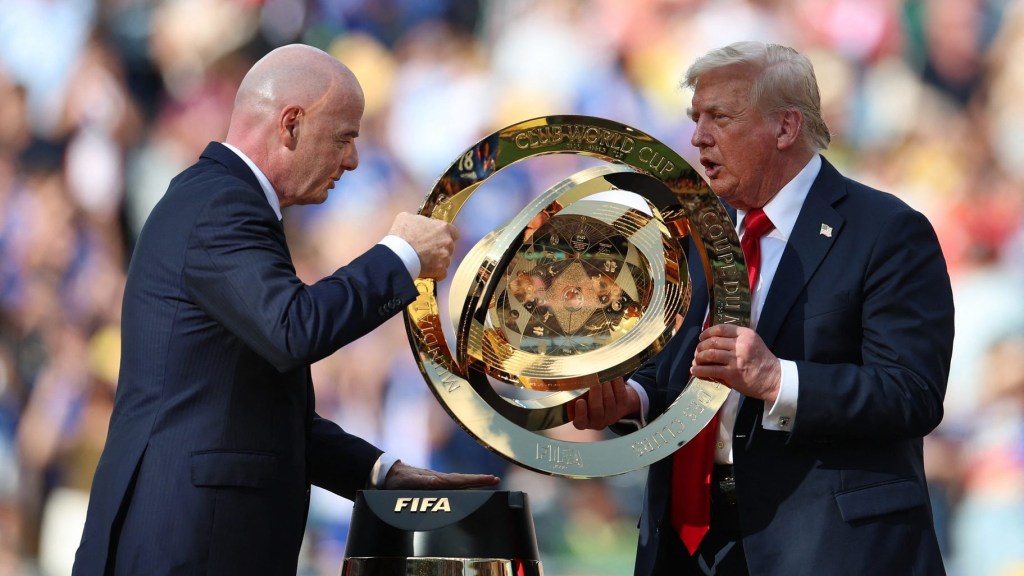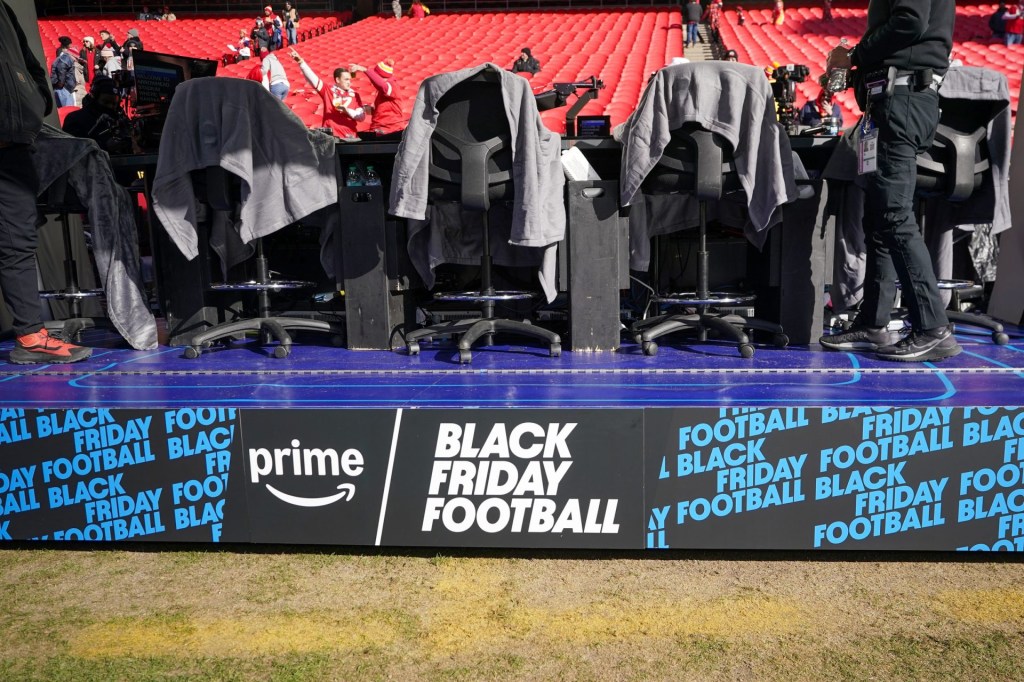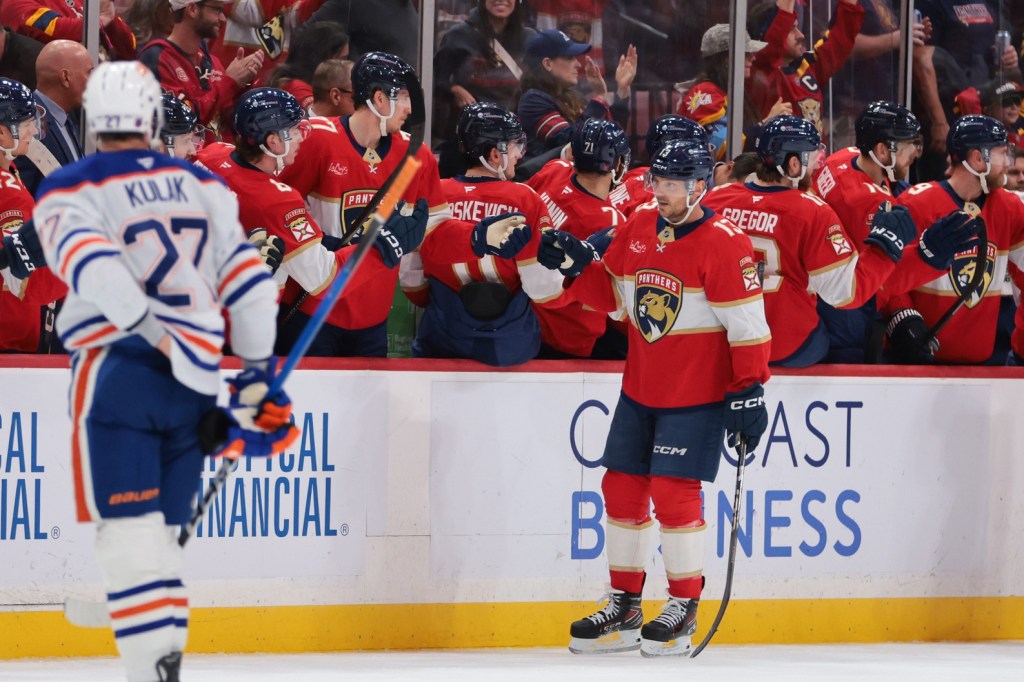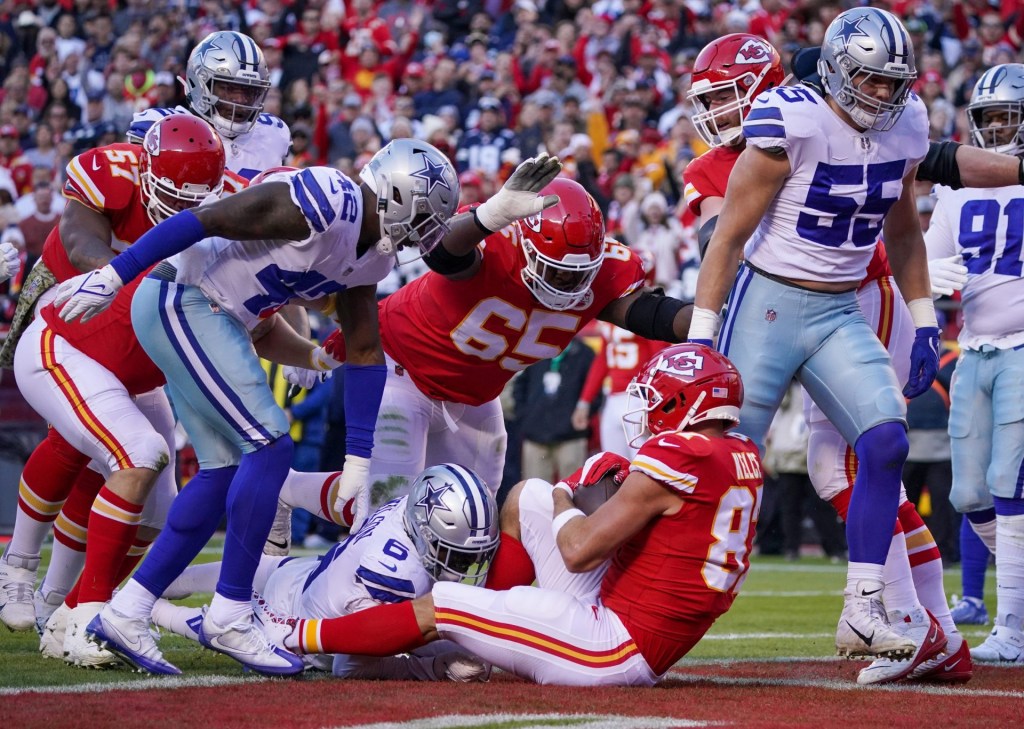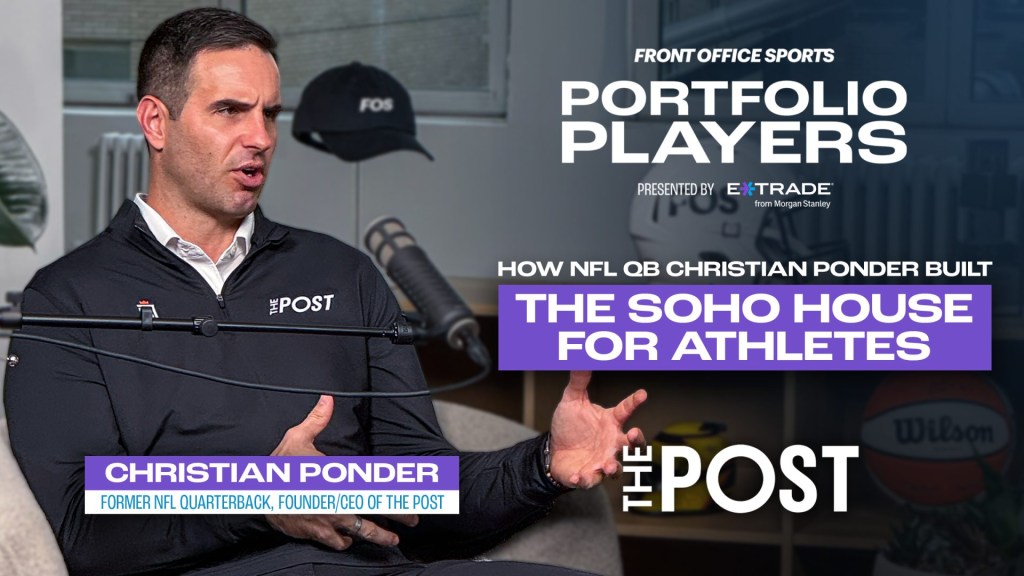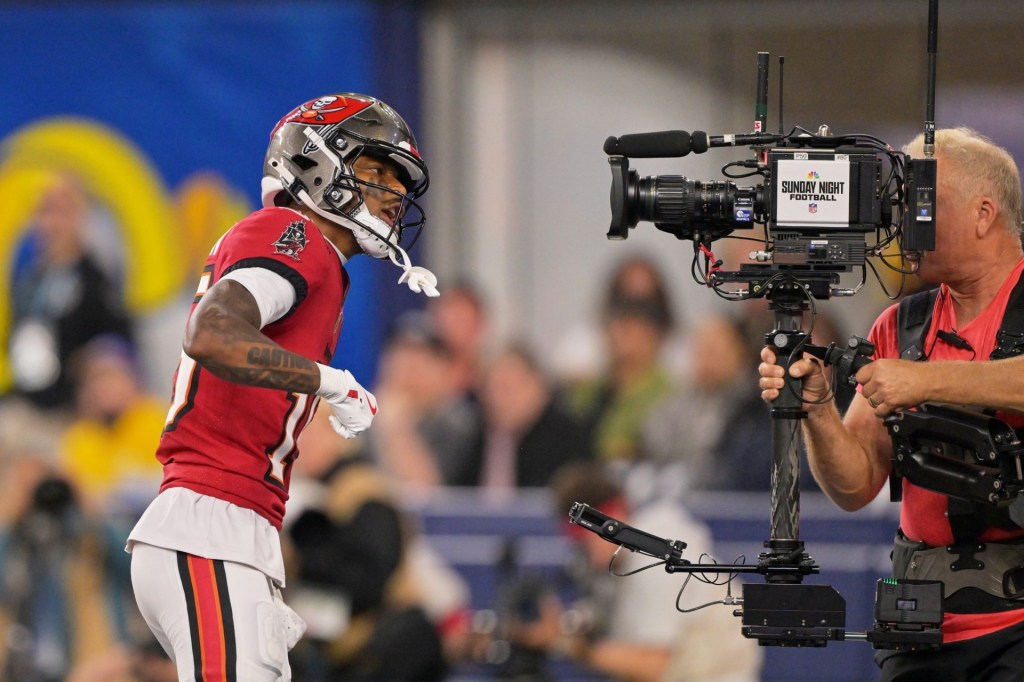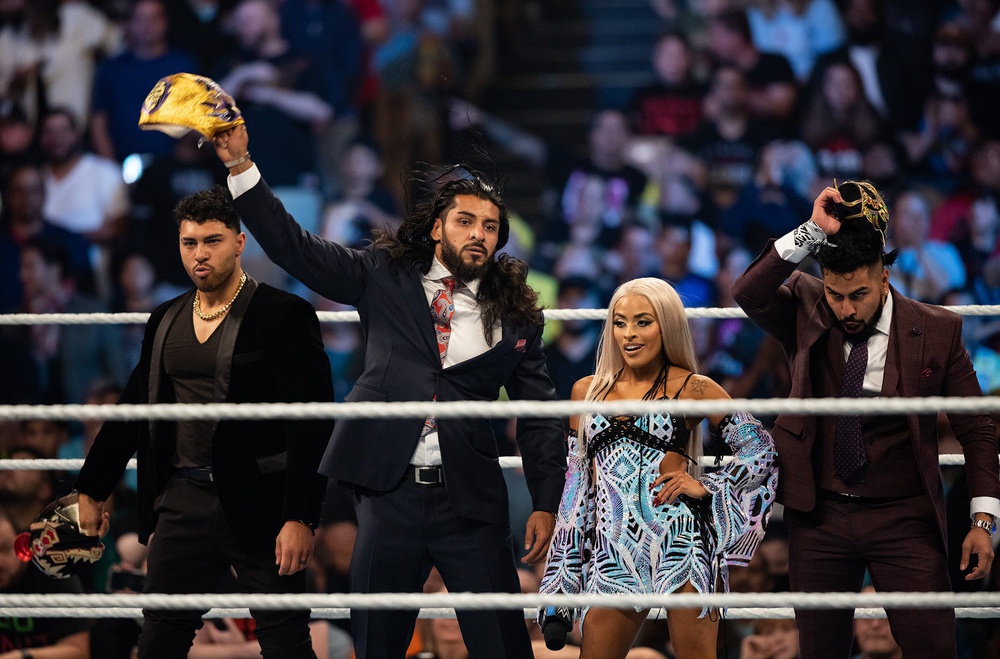David Roberts is all about winning, says colleague Stephen A. Smith.
Roberts, ESPN’s senior vice president, production, oversees the network’s daytime TV lineup of “Get Up,” “First Take,” “Highly Questionable,” “Around the Horn,” “Pardon the Interruption” and “SportsCenter.”
Starring Smith, Max Kellerman and Molly Qerim Rose, “First Take” now dominates Skip Bayless’ rival “Undisputed” in the ratings. For more than a year straight, “First Take” has made ESPN the No. 1 cable network among male viewers across all key demos: 18-34 year old, 18-49 year old, and 25-54 year old.
The hyper-competitive Smith says he’s found a kindred spirit in Roberts.
“Leadership comes in a variety of forms, varying from quiet, to no-nonsense, to in-your-face. No matter the category, the end result requires winning, and that’s precisely what Dave Roberts does: win. With practically everything he touches,” Smith said. “Because he’s excellent — and requires it. Because he’s accountable — and demands accountability. And because losing is never an acceptable option for him. That’s Dave Roberts in a nutshell. If you’re about winning, you want to work for this man.”
Since being named senior vice president in January, the Detroit native has taken back oversight of ESPN Audio Content.
On Aug. 17, ESPN Radio will debut a new lineup of shows from 6 a.m. to 1 a.m. featuring Kellerman, Mike Greenberg, Keyshawn Johnson, Jay Williams, Chiney Ogwumike, Zubin Mehenti, Mike Golic Jr., Sarah Spain, Jason Fitz, Freddie Coleman and Ian Fitzsimmons.
In his first interview since announcing the new ESPN Radio schedule, Roberts talks about the absence of Mike Golic, who’ll call college football games this year while appearing on studio shows like “SportsCenter.”
He also weighs in on rumors that Bayless wants a reunion with Smith, and how the coronavirus pandemic could permanently reshape listener habits and sports media.
Excerpts:
Front Office Sports: Let’s talk about the new ESPN Radio lineup. How did you decide on these particular on-air talents?
David Roberts: It was a team effort. It wasn’t just my decision. We spent the last several months trying to determine who would make the best fit, the right teams and provide the right direction. If you look at what’s going on in the audio space, the way audio is consumed today, in no way reflects how it was consumed, say, even five years ago. It’s a whole new day in radio and audio consumption. The approach we took is to put ourselves in the best position so that we can be accessible on all audio platforms – no matter where people choose to listen.
FOS: For the first time in 22 years, Mike Golic will not be part of the ESPN Radio lineup. Was that a tough call?
DR: When you make decisions, tough decisions are always part of leadership. Not every decision is going to please 100%of the time. I will say in the case of Mike Golic, you can’t say anything other than the fact he’s first-class. He has delivered for over 22 years in morning radio. In his new role, we expect nothing but the same from Mike Golic which is 100%.
FOS: Christine Golic, Mike’s wife, tweeted he offered to team up again with Mike Greenberg but there were ‘no takers.’ Your comment?
DR: I’m not going to respond to comments made on Twitter. Nor am I going to go into the background of internal discussions. I’ll just say Mike Greenberg has his plate full with doing ‘Get Up’ and also with his [new] two-hour radio show. As we look at the overall future of ESPN Radio, we feel very comfortable, and confident, in the positions that we’ve taken as we map out, not just the morning drive program, but the entire day from 6 a.m. to 1 a.m. in sports talk radio.
FOS: How’d you lure Greeny back to radio?
DR: Greeny has always loved radio. That’s his first love. So he was extremely excited about getting back on the radio. One of our strategies is to have that synergy between TV and radio. One of the keys to our success is how well we merge the two and cross-promote from one platform to the other. So when Greeny’s off the air on ‘Get Up’ at 10 a.m ET, he’s back on the air at noon ET on radio. So hopefully the crossover will deliver positive results.
FOS: Chiney Ogwumike will be the first African American woman to co-host a network sports talk radio show from Monday–Friday. How important was it to you to have diversity in your new ESPN Radio lineup?
DR: It’s vitally important. First of all, when you look at who’s playing the the key sports that we talk about, from football to basketball, it only makes sense to have diversity and key African-American voices, whether they’re male and female, to be on the air, discussing the scores and the keys to the game, along with the various issues that go along with the sports world today…
FOS: What should we expect from these new radio shows?
DR: I think what you’ll see with Keyshawn and Jay-Will and Zubin is they will certainly be a point of differentiation in the world of radio. Keyshawn and J-Will are essentially two totally different persons. People will enjoy finding out what makes the two of them different. Then you’re going to have Zubin, who at some point has got to be putting out an encyclopedia about sports. He’s about as well-read and knowledgeable about all sports as you can be.
With the entire lineup, whether it’s Keyshawn, J-Will and Zubin to Greenberg and [Max] Kellerman and Chiney and [Mike] Golic Jr., you’re going to have just new voices, fresh points of view and people who are committed to not only working hard, but working smart. At the end of the day, that’s all we can guarantee. And we’re going to guarantee that. We’re going to work hard, we’re going to work smart and hope that the results follow.
We’re also very lucky to still have Dan Le Batard on from 10–12 noon ET as kind of the show that’s still in its place. But they will expand their focus into the digital space by doing a daily, original podcast. That’s part, again, of our overall strategy. We’re not just terrestrial radio. We are audio in every sense of the word, whether it’s terrestrial radio to digital podcasts, television, smart speakers, you name it. You’re going to be able to listen to us. Again, I want to emphasize that the only guarantees that we’re going to make are we’re going to work hard, we’re going to work hard and hope that the results follow. That’s all we can ask for.
FOS: Let’s switch to your TV duties. The competition between ‘First Take’ and FS1’s ‘Undisputed’ is not much of a competition any more, with ‘First Take’ often doubling ‘Undisputed’’s audience and more. Why?
DR: When you have a talent that is the magnitude of Stephen A. Smith that always is a key ingredient to success. Stephen A.’s impact on ‘First Take’ is unmatched. You can count that as one of the primary reasons.
The other reason is ESPN has built quite a morning juggernaut. Prior to the pandemic, you had ‘SportsCenter’ into ‘Get Up.’ We all know ‘Get Up’ has had quite a turnaround thanks to the leadership of Mike Greenberg and his team and also the cast of characters who are on that program. So you have a strong program leading in.
Then you have ‘First Take’ anchored by Stephen A. Smith along with Max Kellerman. You have quite a strong common program. ‘First Take’ is just an interesting program to watch. It doesn’t shy away from topics that others might consider to be controversial. People like to watch and, frankly, people love to watch Steven A. whether they love him or hate him.
FOS: Stephen A. and Skip have publicly talked about working together again. Bayless’ contract with Fox Sports is up in September. Any interest in bringing Skip back to ESPN?
DR: I wouldn’t even use this opportunity to answer that question. The bottom line is we’re very happy with what we have on ‘First Take’ right now. The show is a dominant program. We’ve been watching the competition closely. We’ve been blazing our own trail, if you will, with the people we have. We look forward to continuing to do that as we move forward.
FOS: As you noted, ‘Get Up’ has had a big turnaround. From a show seen early on as an expensive flop it’s become a hit — and a factory line for emerging talent like Maria Taylor, Laura Rutledge, Dan Orlovsky, Damien Woody, Marcus Spears and others. What turned it around?
DR: ‘Get Up’ has become a program that sets the agenda for topics and interesting conversations. It starts with the direction that’s provided by [coordinating producer] Pete McConville and his team, working hand in hand with Mike Greenberg, who’s about as hands-on an editorial person as you will find in this business.
Because of that focus and attention to detail, the No. 1 priority for what makes that program are interesting topics, breaking news coverage equal to those interesting topics and a mix of diverse voices. You will see up to six or seven different people on that program from all backgrounds — male, female, Black, white — throughout the week. So it just makes the show an interesting watch. It moves and it sets the agenda. That’s why the program has enjoyed a turnaround. We look forward to that continuing as we hopefully return to some normal sports schedule in the near future.
FOS: What’s interesting about ‘Get Up’ is you don’t silo your experts to one topic: NFL, NBA, etc. They are invited to weigh in on a variety of sports and topics. Deliberate?
DR: Yes. The reason is you can’t have a cookie-cutter approach to covering, and discussing, content. Content that matters to the audience that watches these various programs. You just can’t do that. That’s a recipe for failure. Or a recipe for sameness, blandness, and then failure.
FOS: Then there’s the rebound of the 6 p.m. ‘SportsCenter’ under your watch. Why is this version with anchors Kevin Negandhi and Sage Steele working, whereas ‘The Six’ with Jemele Hill and Michael Smith did not?
DR: The focus of our 6 p.m. ‘SportsCenter’ is on covering the news. Setting the table for what’s coming up after ‘SportsCenter.’ And providing the best of storytelling that this network has to offer. It could be features that run anywhere from three to eight minutes. I don’t want to be perceived as criticizing the people who were on the show prior to the change, because they both were very talented and brought a lot to the table. But our focus with this edition of ‘SportsCenter’ is to fit those expectations that ‘SportsCenter’ has, which is to cover the news, show the best and most compelling highlights of the day, put them in context and bring the best that we have in the area of storytelling. And we believe that we’ve done that, whether the show is one hour or two hours. We’ve even done, over the course of this pandemic, a four-hour edition of ‘SportsCenter’ in the evening. So hopefully we’re contributing to helping to strengthen the brand of an already strong brand, which is ‘SportsCenter.’
FOS: To many viewers, shows like ‘Get Up’ and ‘SportsCenter’ have become go-to’s the past few months. Did they take on an additional importance as viewers searched for any and all information during the pandemic?
DR: Yes, absolutely. Some people may have thought, ‘Oh, there are no games.’ Well, just because there were no games didn’t mean there weren’t news topics to cover.
There has been so much breaking news during this period, whether it’s Tom Brady leaving the [New England] Patriots to the free agency class to the lead-up to the NFL draft. … So there’s always an enormous cycle of news. We’re fortunate enough to have a group of dedicated people who are in position to serve the viewers and our listeners through all of the sports talk radio that we do and all of the breaking news topics and conversations that result. … The breaking news cycle has been never-ending throughout, by the way.
FOS: Let’s talk about Will Cain, who had a very nice run before leaving for Fox News. Cain was the ‘conservative’ voice at ESPN. Does ESPN need another Will Cain-type to balance out the network’s perceived ‘liberal’ bent?
DR: Will Cain is an extremely talented individual and he brought a lot to the table for ESPN. Yes, he was considered to be by so-called critics or experts to be a conservative voice. You know what? That’s part of meeting the expectations of having a diverse team of people on the air. So it’s something that we will pay attention to. Because it is important that diversity of thought, or diversity of viewpoints, are also part of meeting the expectations of having diversity in your on-air, and behind-the-scenes, workforce.
FOS: If everybody has the same opinion, it’s boring, correct?
DR: Right. I agree.
FOS: The New York Times recently reported Black ESPN employees believe there’s everyday racism and barriers to their career advancement at the company. How do you respond?
DR: I’m not going to comment on that because it’s just not the appropriate forum to respond. … I will say that ESPN’s record in the area of diversity is better than most media companies. I know for a fact that the commitment to diversity is much more than lip service at this media company, when I compare it to what comes out of many of the other media companies. So you can quote me on that.
FOS: Sports TV networks are employing a stripped-down production approach during the pandemic. Will there be permanent staffing/production changes coming out of this crisis?
DR: Due to the outstanding technology and operations team we have here, you see anywhere from four or five dozen home studio cameras set up at various key talents around the country. That is going to become part of the norm as we move forward. Because it probably wouldn’t be prudent to have six or seven people flying into New York and have them all in the studio on a particular show. I think we’ve demonstrated over the course of this pandemic that you can have the kind of quality conversations and programming without doing that. So that will be one of the pivots that I believe that you will see when sports returns to somewhat normalcy.
The other other thing is, I was going over some radio data and information. Before COVID, in morning drive radio, people were listening to their radios by 7:15 a.m. in the morning. Since this pandemic started, that time has moved somewhere between 8:30 and 9 a.m. ET. One of the normalcies, or points of being normal, might be there will be staggered morning drive shifts. More people will still be working from home after the worst of this is over. So it means that we have to strategically program and plan.
That’s one reason why the approach we’re taking with our radio lineup is the focus of being heard — wherever people happen to be listening. Whether it’s in their car or on their smart speakers or where the radio programs are going to be on television as well. It will have to become the focal point.
Because the day of just expecting people to be listening to you in their car driving somewhere might continue to be reduced. … If they’re going to be working from home, that means they’re not going to be driving in during rush hour traffic. Or driving home. So that’s also part of our overall plan, not only for radio, but for television as well.
FOS: How do you juggle all these TV and radio shows?
DR: Well, you know I’m not dealing with sports-specific operations. But the plate is full — and there’s never a lull in the action. … You have to become an effective delegator. I’m fortunate to have a group of talented leaders over the various shows, who run those shows day to day, whether it’s Pete McConville with ‘Get Up,’ or Antoine Lewis with ‘First Take’ and Greg Dowling running the evening ‘SportsCenter.’
Then there’s Amanda Gifford who runs the radio network day-to-day. There’s an array of talented people that are on the team. You basically allow them the room to run their programs. It gives me an opportunity to step back and look down the road, three months, six months, even a year.
